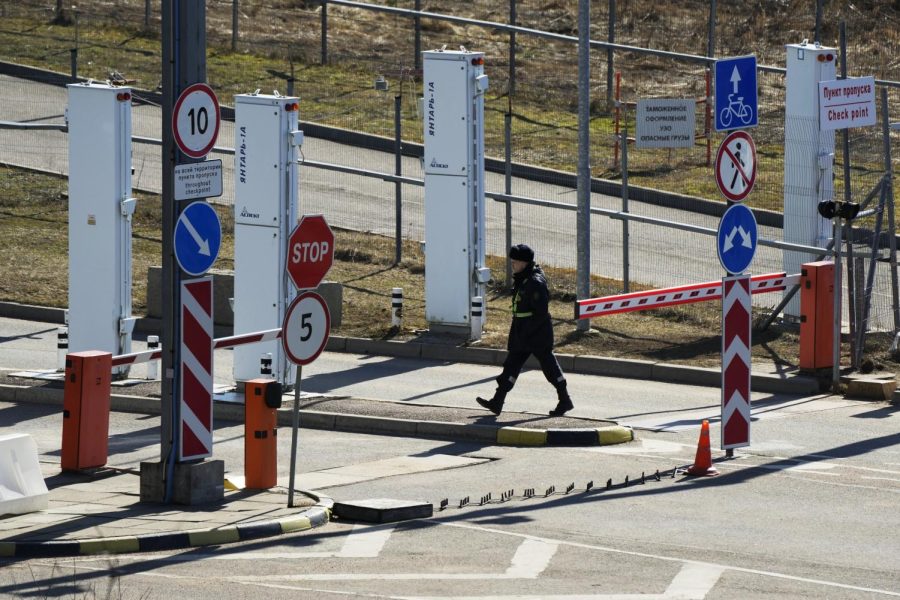Finland joins NATO
A Russian border guard officer walks at Pelkola border crossing point in Imatra, south-eastern Finland, Friday, April 14, 2023. On April 4, Finland officially joined the North Atlantic Treaty Organization.
Apr 21, 2023
Drumroll please, for the 31st member of the North Atlantic Treaty Organization. . . Finland!
With its acceptance into NATO, Finland ends its 78 years of military non-alignment. At the ceremony, NATO Secretary-General Jens Stoltenberg proclaimed, “. . .Finland has decided to join NATO and be part of the world’s most successful alliance.” Stoltenberg asserted that Putin is getting the opposite of what he sought with his invasion of Ukraine, less NATO.
Finland shares an 810-mile-long land border with Russia, and given the attack on Ukraine, it is no surprise that Finland is concerned with its security. A senior fellow at the Atlantic Council’s Europe Center, Rachel Rizzo, contends that Finland sought out membership because “NATO deterrence works.” Now, Finland bears the complete protection of NATO’s Article 5 guarantee that an attack on one member is an attack on all members. In essence, Finland is another name on NATO’s roster that Russia has to worry about aggravating, and, more importantly, they are right on their doorstep.
What are the geopolitical impacts?
First and foremost, Finland now receives complete NATO protection, and NATO gains Finland’s significant military capabilities. Reuters correspondent Anne Kaurenan notes that Finland’s military prowess comes from its fear of Russian aggression. Finland is one of the only European countries to maintain conscription throughout peacetime. Moreover, it wields competent armed forces trained with the primary goal of repelling a Russian invasion. It possesses an impressive array of military force with a wartime reserve of 280,000 soldiers (with an additional 870,000 liable for service in case of need), 650 tanks, 61 F/A-18 Hornet Fighter Jets, and 33 assorted naval vessels. Foreign Policy states, “Finland also has the largest artillery force in Western Europe, with more firepower than the militaries of Poland, Germany, Norway, and Sweden combined.” Importantly, Finland bolsters NATO military capabilities and illustrates the failure of Putin’s efforts to weaken Western alliances.
How did Russia respond?
Russia’s Foreign Ministry expressed that Moscow “will be forced to take military-technical and other retaliatory measures to counter the threats to our national security arising from Finland’s accession to NATO.” Russia’s firm stance against NATO raises questions about future and past aggression.
John Carroll political science major Austin Zieman ‘25 states that his “ongoing theory on the Ukraine conflict is that it can be characterized by one word: opportunity. While I do believe Putin wanted to invade Ukraine, the alleged push from the US for NATO expansion into Ukraine provided an opportunity for Russia to claim a justified invasion. . .” Zieman raises an interesting question with Finland’s new status: will NATO’s newest member provoke more Russian aggression? Only time will tell. Regardless, while Russia continues its attack on Ukraine, NATO cannot stand idly by.













